The car from Ubud dropped us off in Sanur, where we boarded a boat for an even smaller island that’s part of Bali, Nusa Lembongan (population about 7000). We settled onto wooden planks in the bottom of the boat next to the other tourists for the one hour ride to the island. Once on the other side, we waded the last few meters to the beach, where we were immediately approached for business, “Where are you staying? Here, very expensive, how much you want to pay?” Our would-be guide handed us a map (which would later prove to be not remotely to scale and nearly useless) and pointed to the side of the island. “Cheaper here.” We nodded thanks and tried to walk away, wanting to find a place to stay on our own. “You need a motorbike?” our new friend called after. “24 hours, 75,000 rupiah (about $8).”
A few minutes later, we were accepting the keys to the “Sunset I,” our (automatic!) motorbike for the next two days, and driving on the left side of the road for the first time. In general, there are no cars on Nusa Lembongan (except a handful of trucks that must have come over on a boat), so no buses or taxis (or requests for “Transport?”), just motorbikes riding on the narrow roads along the beaches and through the mangrove forests. Despite the fact that there are gorgeous white sand beaches with incredible surfing and diving all around the island, it’s not very touristy in general, because there are so many other incredible beaches to choose from on the main island of Bali. There are restaurant-guesthouses lining the beach that faces the main island, but as soon as you venture off of this strip, it feels like the “real Bali.” Temples, corrugated tin houses, and tarps with drying seaweed are everywhere. If burning trash is the smell of Laos, the smell of Nusa Lembongan is seaweed. Near the shore it seems like every single local house has seaweed outside, and we saw small boats coming in each morning filled with seaweed as well. Apparently land farming isn’t very good on the island, so seaweed farming is a major part of the local economy.
We easily found a nice-looking place on the beach: Linda Bungalows, which boasted the “Best Food on the Beach” in their open-air cafe, and which I’m inclined to believe: fresh seafood and Western favorites like chicken parmesan and chili con carne (Mexican food is the one type that can’t really be found in Vientiane, so this was exciting). After checking in, we decided to explore the island by motorbike, with the help of the useless little map. The middle of the island is covered in forest, which opens up in places to small beaches, each with a charming name like “Dream Beach,” “Mushroom Beach,” and “Sunset Beach.” Each is a little bit different–some are surrounded by cliffs, some have warung with food and drink, some are fine white sand and others are rocky, with lots of washed-up coral pieces.
During our driving adventures, we decided to cross to an even smaller island, connected with a bridge. As we started across, the wooden planks that formed the one way crossing rattled dubiously, and the gaps between them seemed to get larger and larger, until somewhere in the middle, almost four planks were missing, nearly the size of one of the bike wheels, and the only solution was to accelerate and not look down. Once on the other side the motorbike trials just continued, as the roads became rougher, with huge potholes and unpaved sections, and dramatic vertical inclines and drops. More than once it seemed like the bike wasn’t going to make it, but the trusty “Sunset I” pulled through every time.
The pace of life on the island seemed very relaxed. “Chilled out” is one of Lonely Planet’s favorite phrases to describe places in Asia, and with no cars, and relatively few tourists, Lembongan fits this description perfectly. It seems like life just goes on exactly the same year-round–the temperatures don’t fluctuate much, tourists come in and out on daily shuttle boats, fish are caught and cleaned, seaweed is harvested and dried, the roosters crow as soon as the sun rises. The two days that we spent on the island were so relaxed (well, except for a few hair-raising driving experiences). On the last night, as we sat with a Bintang Beer on the porch of the bungalows watching the vivid sunset, and waiting for dinner time, the power suddenly went out. But the tables were lit with candles, and the kitchen used gas, so the evening continued uninterrupted–a typically quiet Lembongan night of seafood, Bintang, and the sound of the tide.






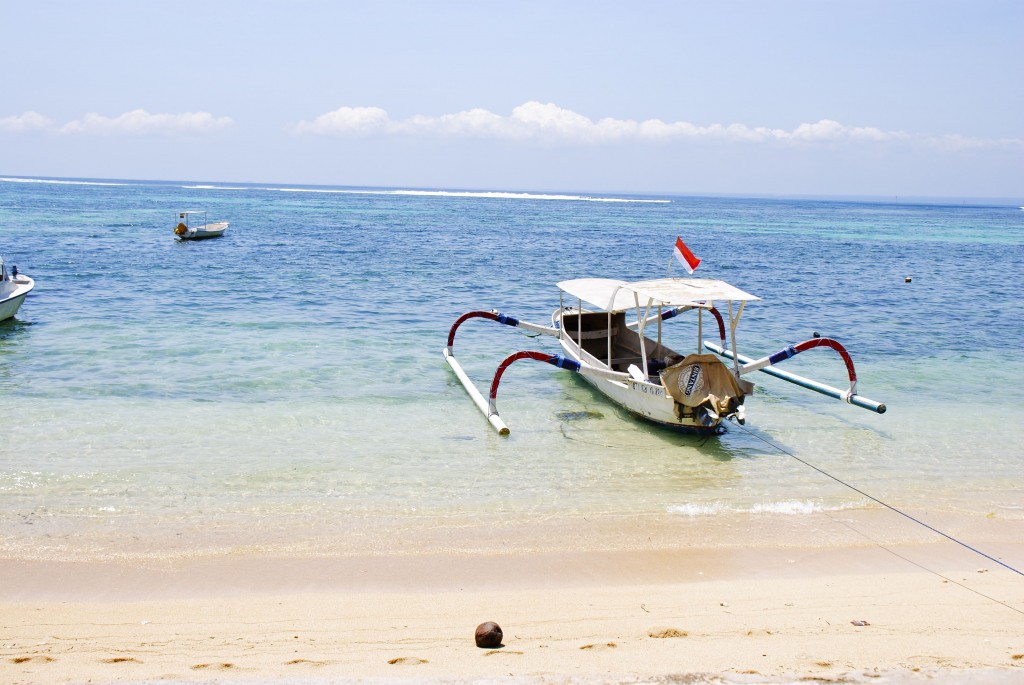
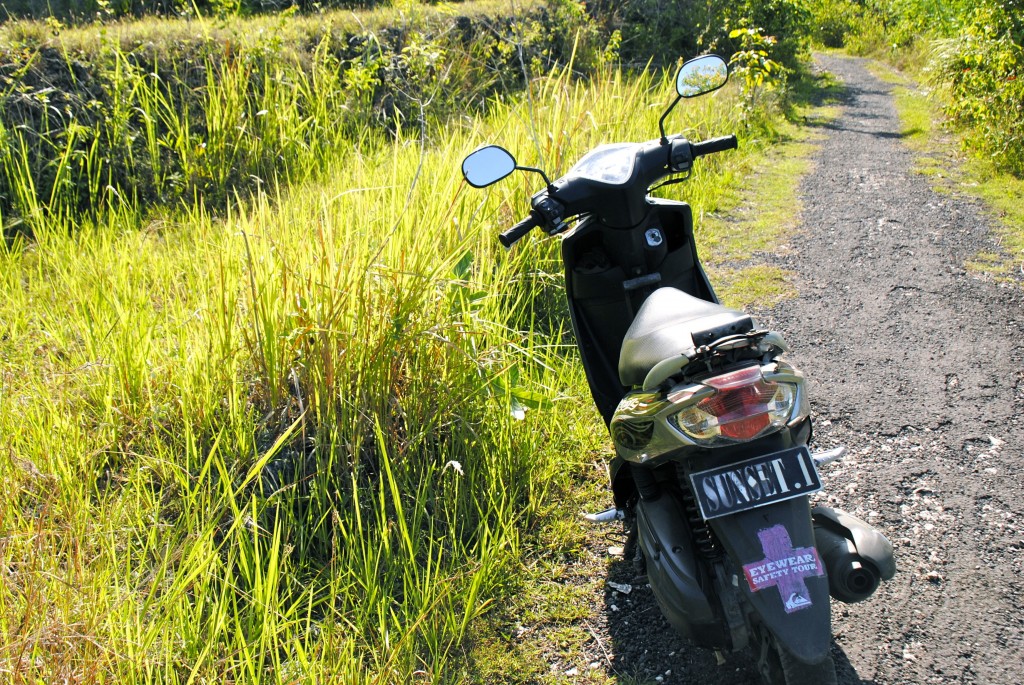
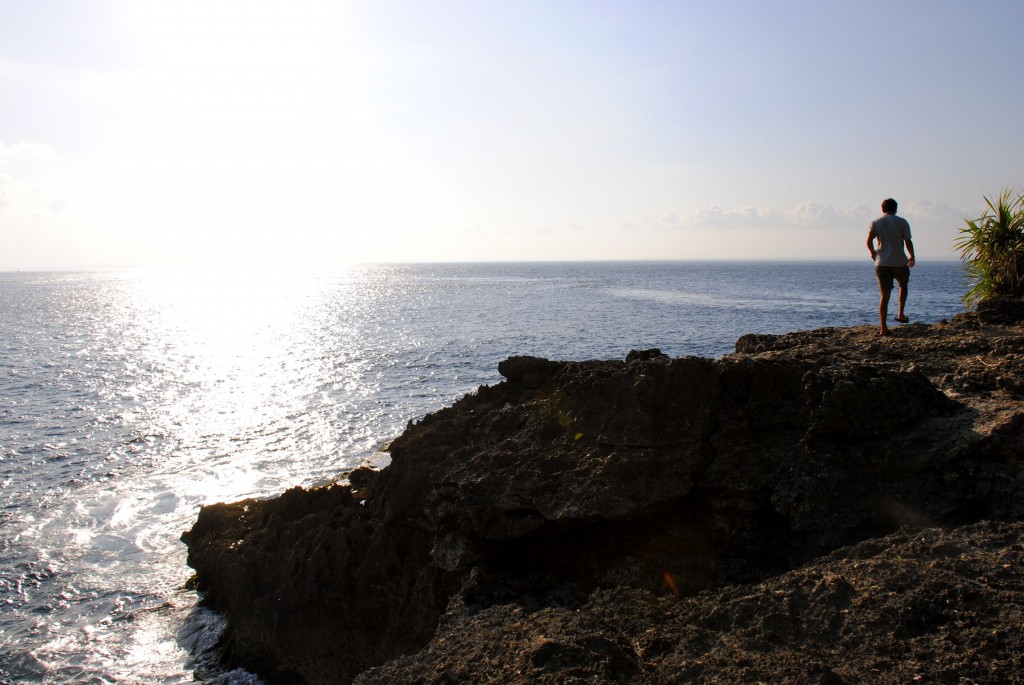
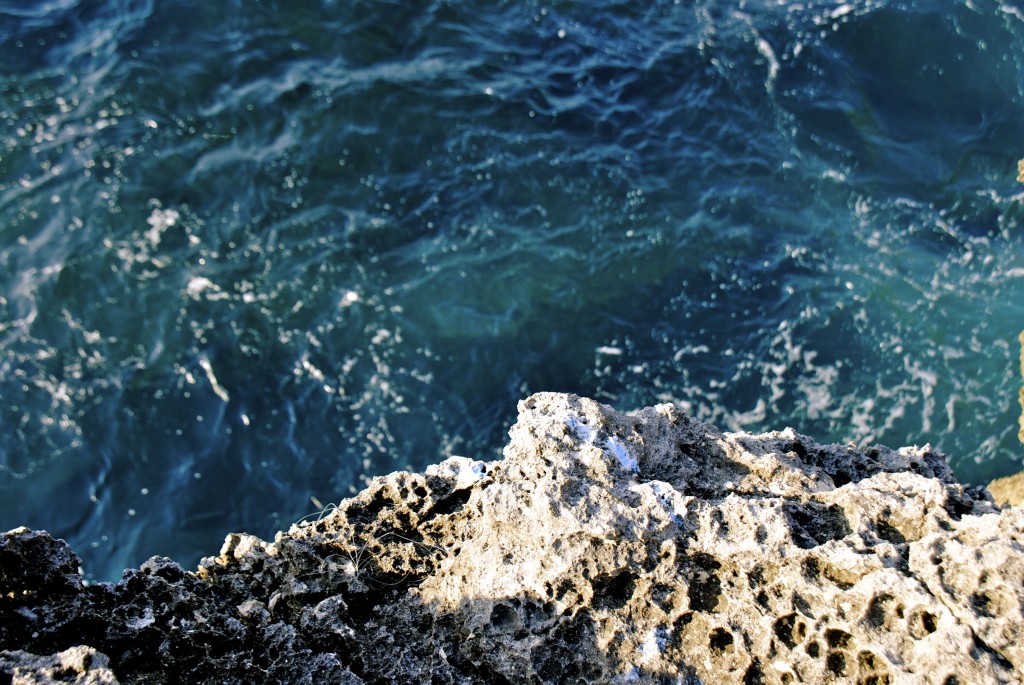
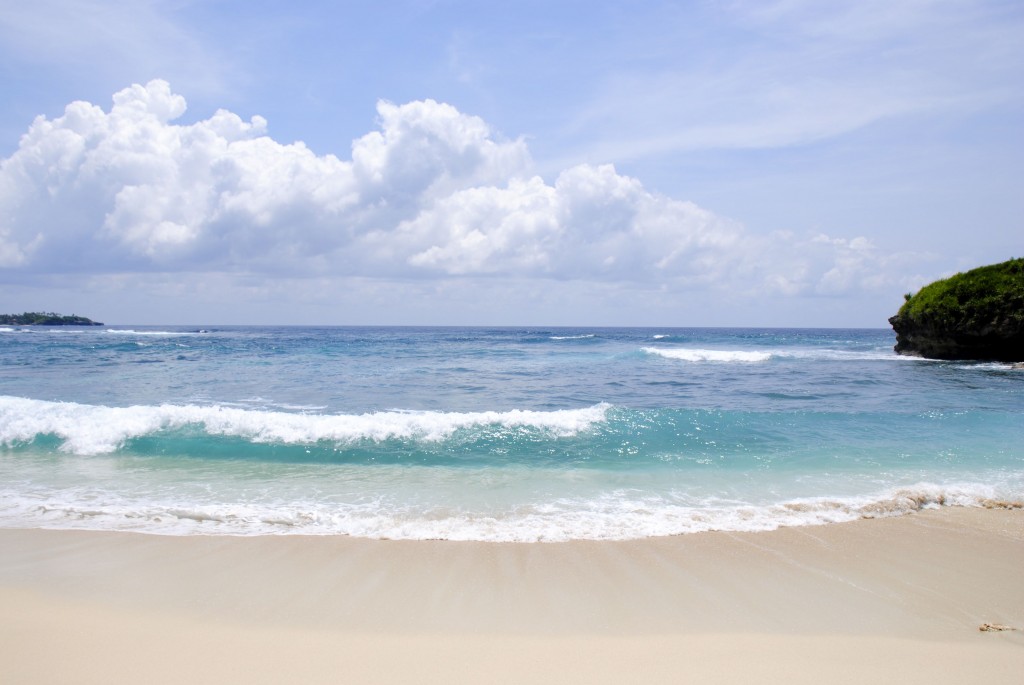
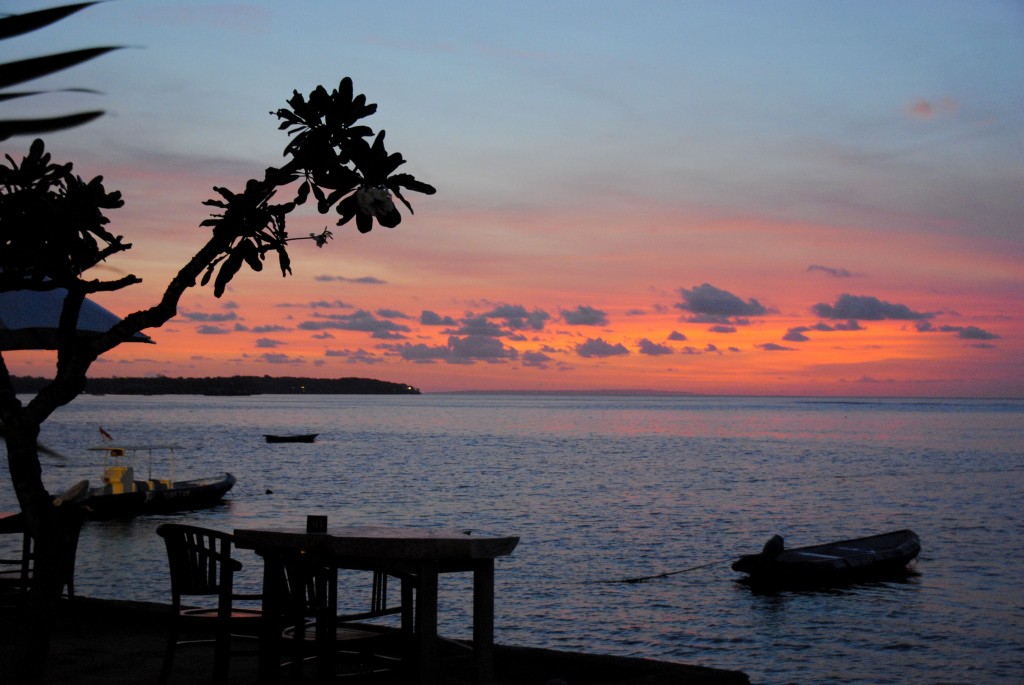
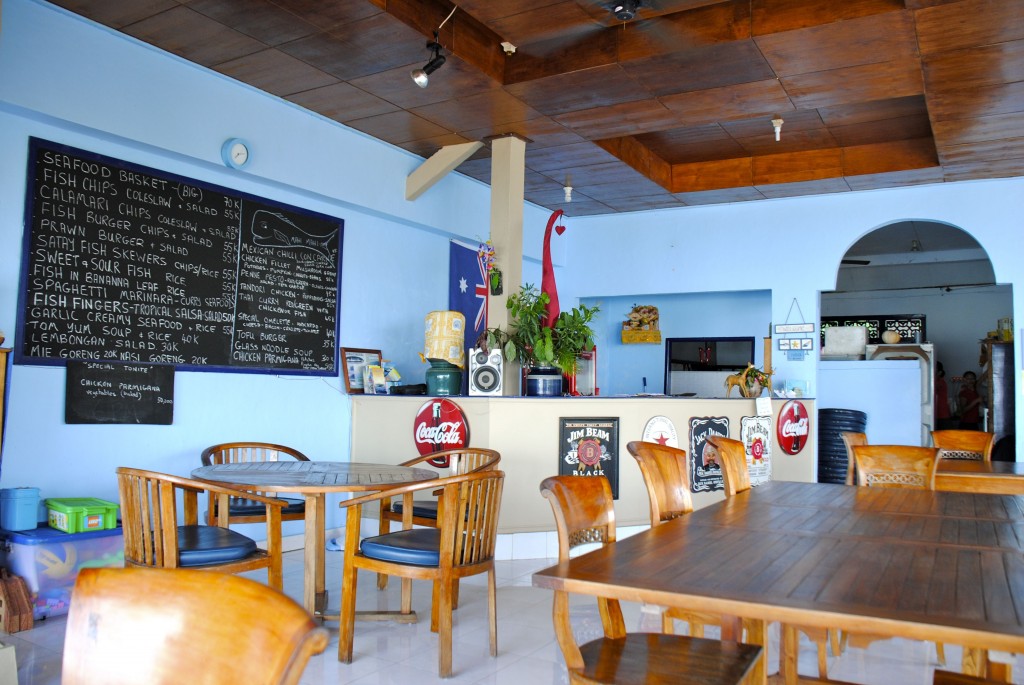
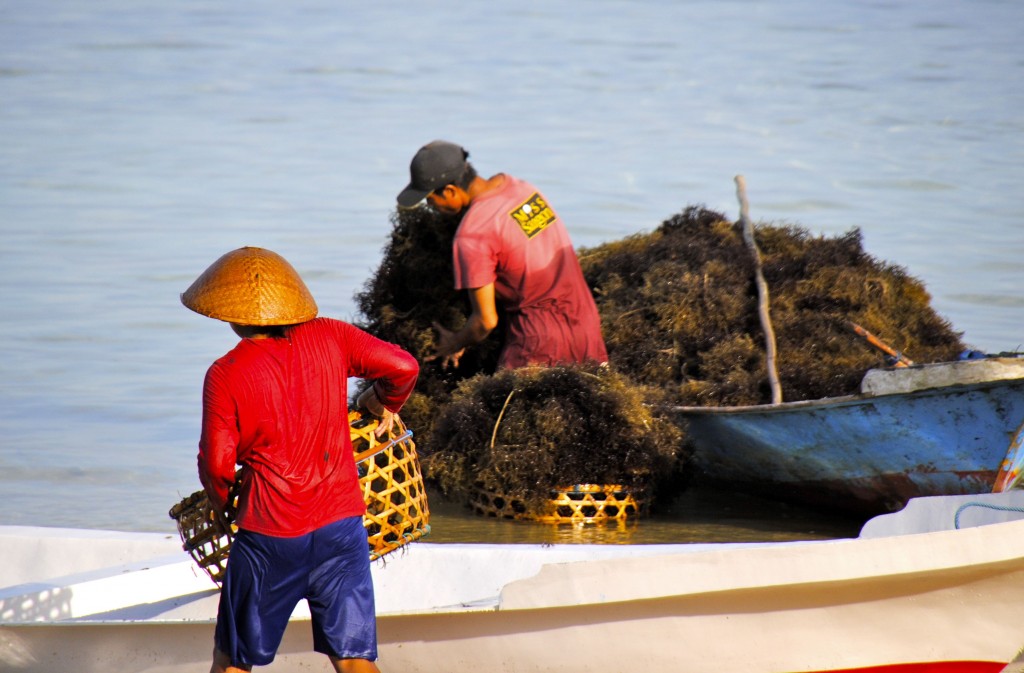
Fantastic! I lve near the equator but have never been able to capture colors like these. The composition is great, too!
Pingback: An Island (Not) in the Sun | Somewhere Near Here.